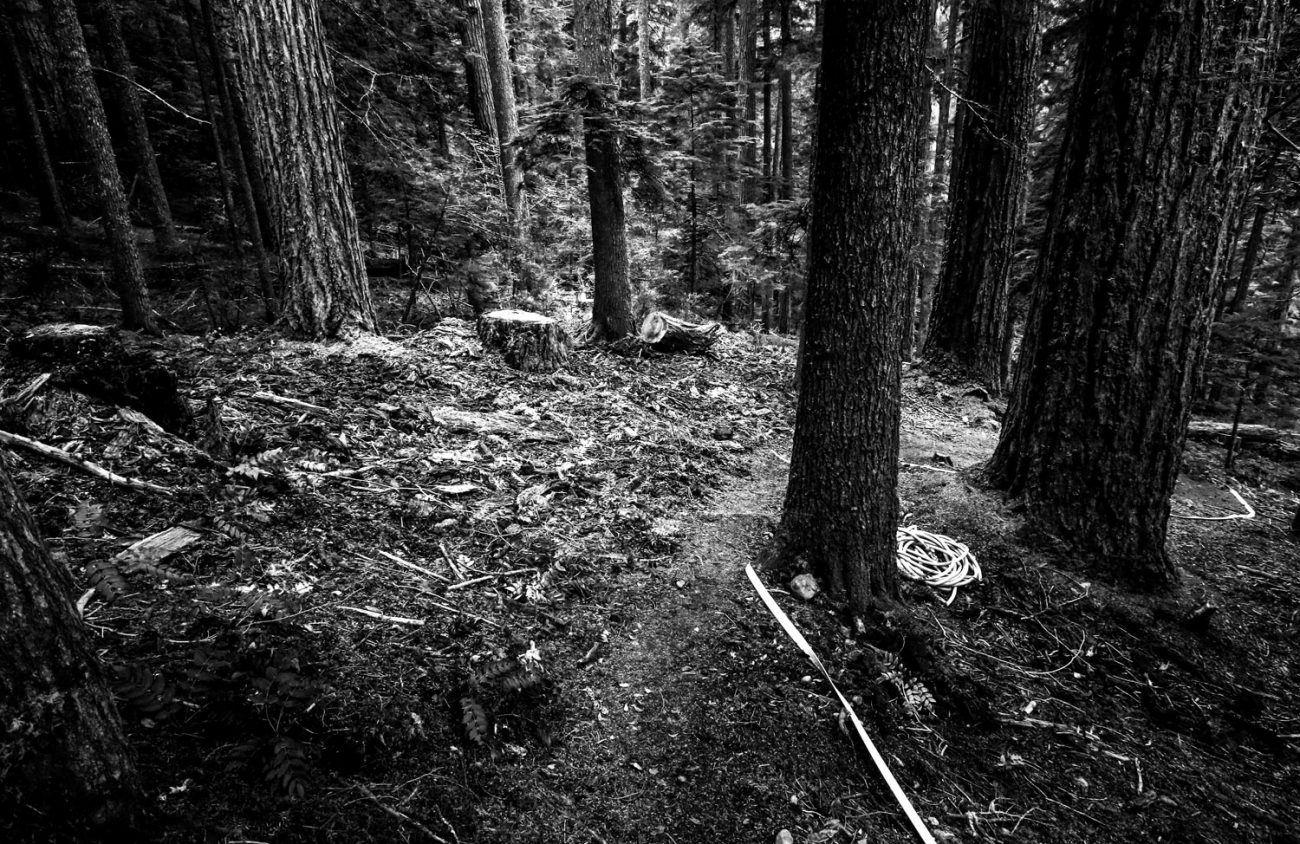The Hwy 46 Project, a proposed thinning plan in the Breitenbush Watershed in the Willamette National Forest, is facing pushback from locals and forest activists in the state.
Longtime forest activist Michael Donnelly moved to the Breitenbush area in 1986 and has been active in a number of projects there ever since. He was a plaintiff in a 1986 lawsuit that was the first to stop ancient forest logging, and he helped shape the Northwest Forest Plan.
Now Donnelly is concerned that the Hwy 46 Project is once again endangering old growth stands and marring the landscape in the name of economic growth.
“My concern is money is driving it,” Donnelly says. “It’s tortuous for them to say they are making the forest more resilient.”
According to the Forest Service’s Draft Environmental Impact Statement (DEIS), the project “is needed to improve stand conditions, diversity, density and structure in the project area, providing benefits to vegetation, wildlife and overall health of the forest.”
Detroit District Ranger Grady McMahan says the Hwy 46 Project isn’t a “timber grab” but a genuine effort to improve the health of the watershed.
“We have a lot of stands that grew back really thick,” McMahan says about areas in the watershed that were clearcut years ago. “Those stands are so thick they’re not able to grow anymore, so they’re slowly dying out. That makes trees more susceptible to fire and disease.”
The DEIS offers three alternatives for the project. Alternative one is to not carry out any kind of project but let the forest sort itself out. The second alternative is supported by the Forest Service and includes harvesting 3,662 acres of timber, including 988 acres of fire-regenerated stands. Alternative three, supported by Friends of the Douglas-Fir National Monument conditionally, would trim only 2,667 acres for harvest treatments and would leave fire-regenerated stands alone.
Fire-regenerated stands are the major sticking point for the Friends, but McMahan says that some of those fire-regenerated areas are suffering the same overgrowth as other areas in the watershed.
Peter Moore, director of the Breitenbush Hot Springs retreat and conference center, says he conditionally supports the project. Compared to logging projects 30 years ago, Moore says the Forest Service is talking sense.
“They’re talking about allowing for some work to be created and some product to be brought from the woods,” Moore says. “Compared to the 1980s and ’70s, when they were taking out billions of board feet and the Detroit Ranger District was cutting more than any other district in the lower 48 states — this is a tiny amount compared to that.”
Moore says his biggest concerns with the project are the roads the Forest Service wants to commission. “We would resist the building of new roads,” Moore says, and “strongly support the decommissioning of old forest roads.”
There are hundreds of miles of roads that are now safety hazards, Moore says, but the Forest Service does not have the budget to care for or properly remove them.
David Stone, president of the Friends of the Douglas-Fir National Monument, argues that much more than thinning and replanting needs to be done in order to ensure diversity. Stone tells EW that various species need be re-planted and staggered in the area. “Natural forests don’t grow one species, all in a line, all the same age,” he says.
Stone worries that the logging project could affect thousands of acres of land that Friends of the Douglas-Fir National Monument is trying to protect through a national monument it seeks to propose.
Donnelly says the trails in the watershed are popular with hikers and that hacking into them is harmful both for the environment and those enjoying it. “They’ve always had names for what they’re doing, but there are always stumps,” he says.
Earlier this year the Forest Service cut a fire line through a late successional reserve of mature and old growth forest that Donnelly helped preserve.
The fires in the area never got closer than 3.5 miles to the stand, but firefighters cut a 70-foot wide, two-mile long corridor that Donnelly says opens the area to predator invasion. He calls it a “predator invasion corridor” and says it allows predators to hunt more effectively without the dense canopy cover protecting creatures, such as endangered spotted owls.
In terms of research done and scientific evidence provided, Donnelly says he is unimpressed with the Forest Service’s DEIS. “I need to see a lot more science,” he explains, and “not just grandiose statements about how it’s going to create resilience in the face of climate change.
Donnelly says he’s concerned that DEIS is saying there isn’t enough early seral growth — sites that are recovering after a disturbance such as fire or logging — but points to dwindling ancient forest as a larger issue.
Moore says he understands that today’s Forest Service is a different organization than the group in the ’70s and ’80s that “ran roughshod over any other competing interest in the forest,” but adds that he still prefers to preserve old tree stands.
Everyone interviewed by EW agrees that preserving the forest is critical but producing commercial lumber and jobs along the way isn’t inherently dangerous, as long as they are conducted responsibly.
“I’ve got no problem with growing trees for lumber. I do have a problem with liquidating old growth,” Donnelly says. “They’ve got plenty of areas where they can grow plantation trees, and they just need to leave it alone, what’s left.”
